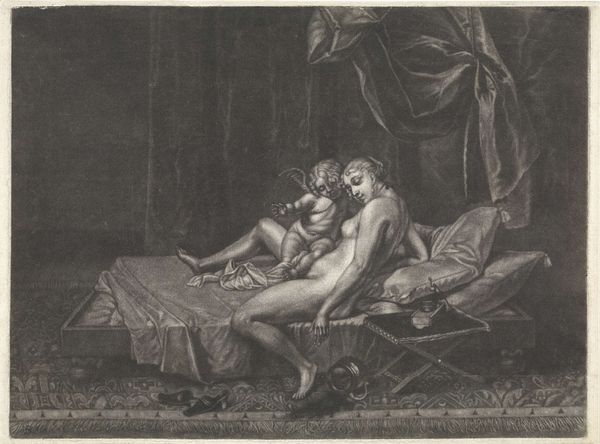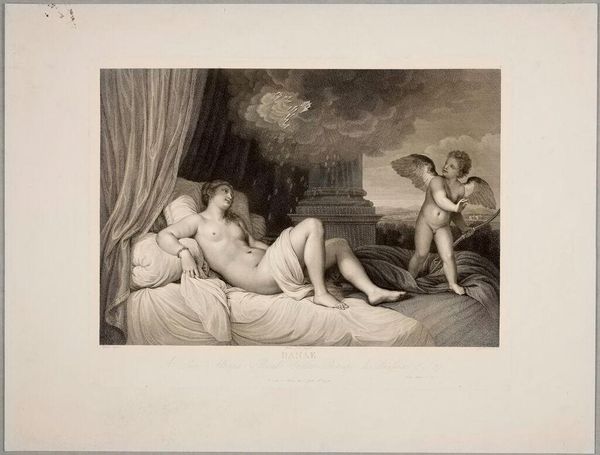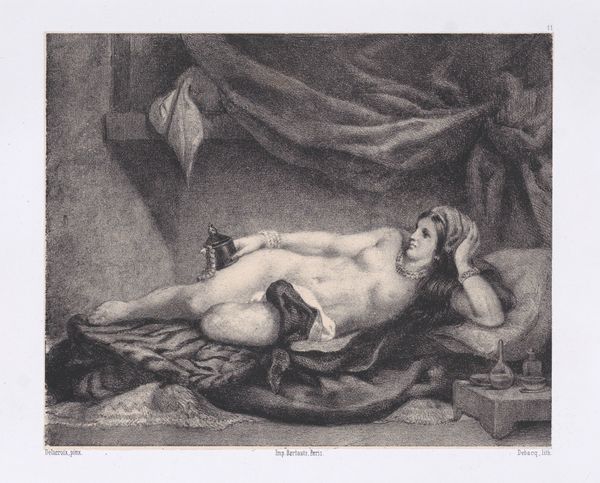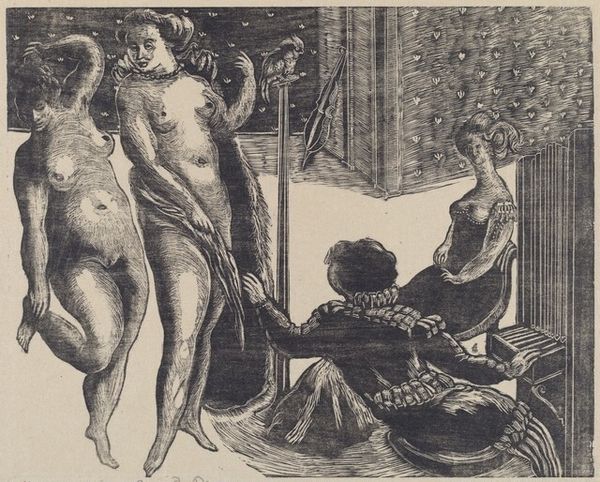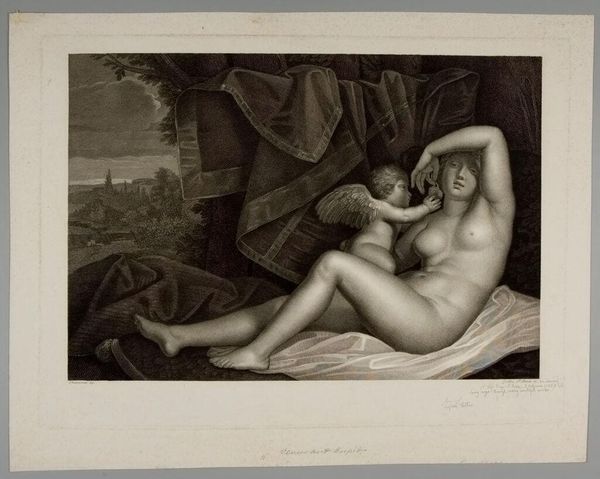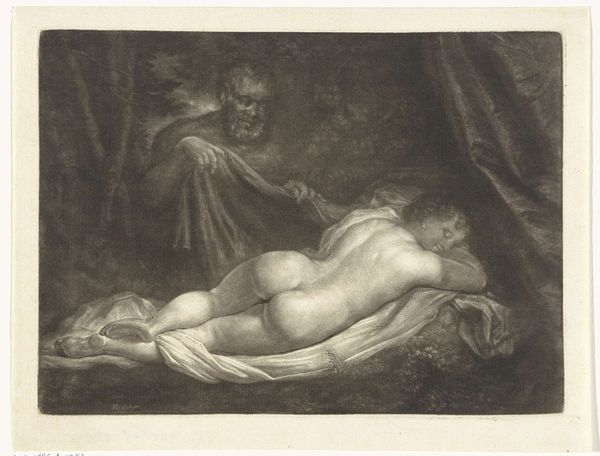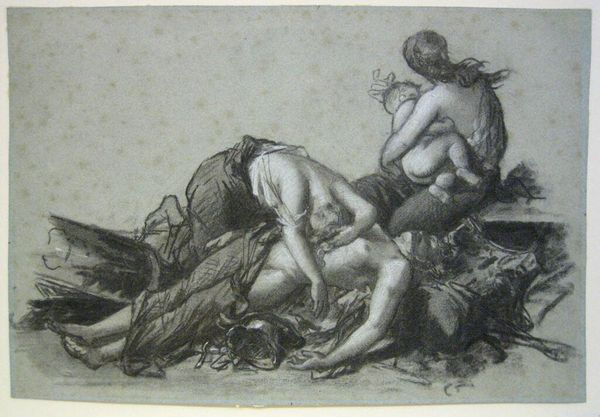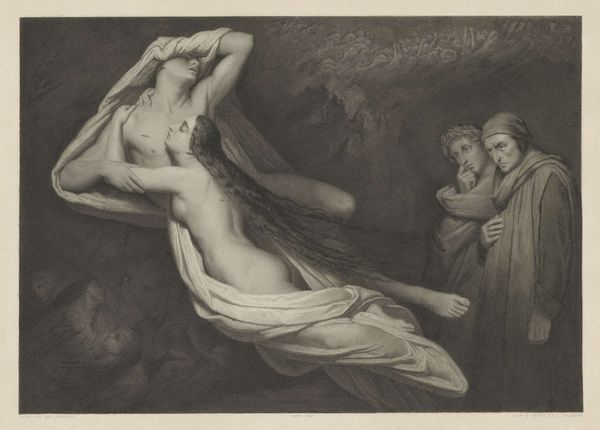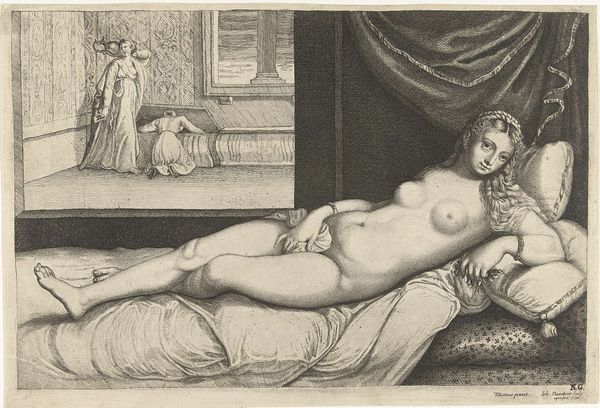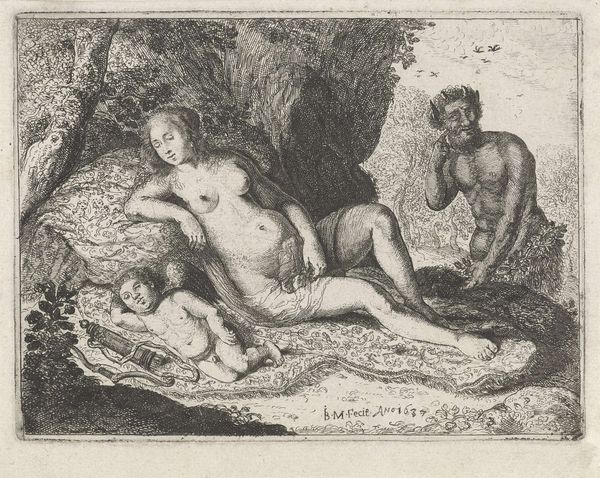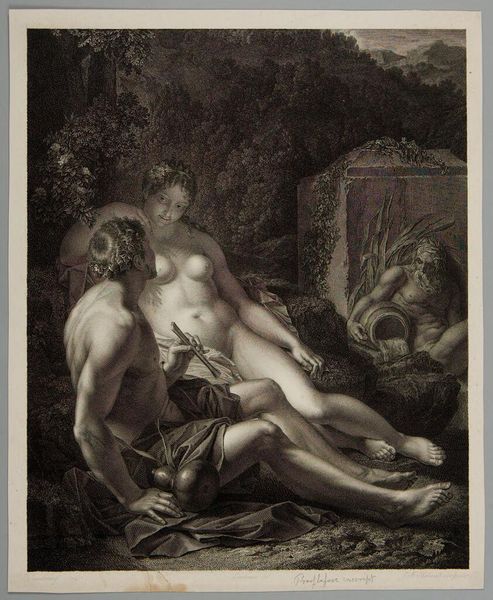
Fotoreproductie van een schilderij door Titiaan, voorstellend Danaë en de gouden regen c. 1857 - 1880
0:00
0:00
photography, albumen-print
#
portrait
#
photography
#
oil painting
#
history-painting
#
nude
#
albumen-print
Dimensions: height 255 mm, width 338 mm
Copyright: Rijks Museum: Open Domain
Editor: Here we have Juan Laurent’s photograph from somewhere between 1857 and 1880. It's an albumen print, a photographic reproduction of Titian’s painting, Danaë and the Golden Rain. Looking at this through the lens of reproduction itself is interesting. What catches your eye about this, Professor? Curator: This albumen print raises critical questions about artistic labor and value. What does it mean to reproduce a painting—traditionally viewed as a unique creation—through the then relatively new industrial process of photography? Editor: Well, the original is hailed as high art, yet this…copy... is a photograph. The hand of the artist is removed. Curator: Precisely. Consider the labor involved. Titian’s original demanded years of training and the use of expensive materials like pigments. Laurent’s photo relies on chemical processes, photographic technology, and perhaps, a darkroom assistant. How does this shift in production affect our understanding of the image? Editor: It definitely democratizes it, doesn’t it? The photograph allows wider access to Titian's work, stripping away the elite status associated with owning or even viewing the original. But what’s lost in that process? Curator: Think about the loss of materiality, the texture of the oil paint, Titian’s brushstrokes - the physical connection to the artist. Photography offers reproducibility, but what does it consume in the process? We also need to think about the consumption of the photograph - is it seen as art or something disposable? Editor: So it’s less about the myth of Danaë, and more about how art is made, distributed, and valued at different points in history? Curator: Exactly. We see the means of production reflected in the image itself, prompting a dialogue between craft and industrial processes. Editor: I never thought about it that way, the focus on its material process completely changes the meaning of the artwork, thank you for shedding some light. Curator: My pleasure, hopefully this gives everyone listening a new perspective on the relationship between photography, labor, and art.
Comments
No comments
Be the first to comment and join the conversation on the ultimate creative platform.
